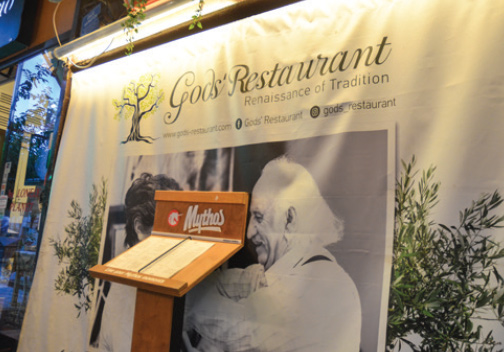A Journey Through Ancient Lands
Many of us are captivated by the rich mythologies of the ancient world. But Sandra McLeod wasn’t satisfied with leaving those stories on the page— she travelled to Greece and Egypt to experience them for herself.
Stepping into the myth of Greece and Egypt
Our journey back in time began in Athens, a city so full of mythological sites that it hardly seemed possible for us to be there in the flesh. We strolled around the city, stopping at archaeological wonders from the Temple of Olympian Zeus to the famed Acropolis.
The Temple of Olympian Zeus, also known as the Olympieion, was one of the largest temples in the ancient world. Construction began in 174 BCE and dragged on for 300 years—learning this almost made us appreciate Canada’s construction season! After centuries of stop-and-start, including a period when several columns were stolen and used in Rome’s Temple of Jupiter, emperor Hadrian finally completed this colossal temple. Its 17-metre columns—15 of which are still standing—towered over us and served as irrefutable proof of the ancient architects’ skills.
After touring the Olympieion, and snapping some photos of the Acropolis in the distance, we headed for the Agora. Translating to the “marketplace,” the Agora was the economic and ideological heart of Athens. There, you can imagine how ancient Athenians flaunted their wealth as they shopped for dyes from the Levant and other precious commodities from faraway ports. The Agora was also where the famed Greek philosophers gathered to debate the meaning of life and beauty.
All of this market talk was making us hungry, so we took a detour to visit the Central Municipal Athens Market. We were overwhelmed by the variety of fresh fish, meat, and produce, but we had other treats in mind: briny olives, toasty nuts, and salty Greek feta. Revitalized after our snack, we proceeded to the jewel of Athens: the Acropolis.
What more can I say about one of the most famous archaeological sites on Earth? The Acropolis’s perch on a rugged limestone cliff has captivated humanity since prehistoric times when its first inhabitants took up residence. Since then, it has been a seat of kings, a home for Greek gods, and now a bucket-list attraction for millions of visitors.
The Acropolis has weathered several wars—the Parthenon even served as a munitions depot in the 17th century—and many of its buildings were destroyed or left in disrepair. But with a little imagination, you can imagine yourself living in Athens at the height of its Golden Age. In that spirit, we treated ourselves to a wonderful dinner (complete with ouzo, of course) in the nearby Plaka neighborhood.
Walking in the footsteps of kings
It was time to make our way to Luxor, Egypt, and dive into another one of Earth’s most impressive ancient civilizations. Our first stop was Karnak, considered by many to be the greatest place of worship in all of human history. The temple was built on what the ancient Egyptians thought was the first patch of ground to rise out of the waters at the beginning of the world.
Egyptian rulers continued to add and expand Karnak’s structures for 2,000 years, culminating in the 200-acre complex we see today. The further back you walk, the deeper into history you can see. You’ll want plenty of time to explore the different structures and try your hand at deciphering the ancient carvings, so get there early in the morning.
Next, we visited the Temple of Luxor, a chunk of ancient history sitting conspicuously in the middle of a modern town. We walked down the Avenue of Sphinxes, which would once have stretched all the way back to Karnak, and into the temple. We were greeted by a 24-meter pylon that detailed Ramses II’s military prowess, along with three giant statues of the man himself—there were originally six statues, which made us wonder if Ramses II had some insecurity issues.
Further on, there were even more examples of the lengths rulers went to in order to enshrine their place in history. The most notable are the reliefs depicting Alexander the Great as an Egyptian pharaoh and the scenes of Amenhotep III’s symbolic divine birth.
Just across the Nile River from Karnak and the Temple of Luxor lies the Valley of the Kings. There are many tombs to visit here, including those of Ramses II and the famous Tutankhamun. We’ve all seen photos of the colossal Egyptian pyramids where many pharaohs are buried, so approaching the Valley of the Kings can be a bit underwhelming—the tombs here are tucked underground, and all we saw was the desolate, rocky landscape.
Any disappointment we felt melted away as soon as we entered King Tutankhamun’s resting place. The young king has one of Egypt’s most spectacular tombs, decorated with detailed paintings and a gold coffin. It’s hard to imagine what Howard Carter would have felt when he rediscovered the site in 1922 after it had been left untouched for 3,000 years.
The mausoleums in the Valley of Kings were stocked with everything a pharaoh might need in the afterlife, like treasure, food and drink, clothing (even underwear), and their own mummified bodies. Archaeologists have also found pet dogs and baboons buried near the pharaohs. The ancient Egyptians had certainly never heard the saying, “You can’t take it with you!”
Our final stop was to see the Colossi of Memnon, the giant statues that once guarded the gates of Amenhotep III’s tomb complex. After thousands of years of earthquakes, flooding, and pillaging, nothing remains of the tomb itself. The lonely statues were a stark reminder: as fortunate as we are to step into the past while we visit these ancient monuments, it’s all too easy to lose a piece of history to the sands of time...
Story and photos by Sandra and Ian Mcleod of Red Door Travel
















